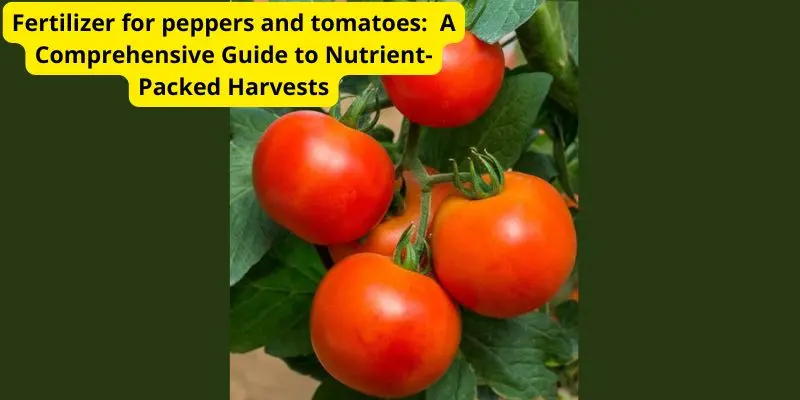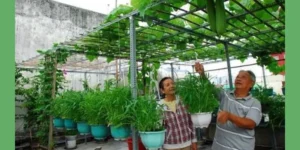Gardenias, with their exquisite blooms and enchanting fragrance, are a prized addition to any garden. However, these delicate plants can be prone to various issues, including yellowing leaves and poor flowering.
Many gardeners turn to chemical fertilizers to address these problems, but a natural and often overlooked solution lies in a common household item: Epsom salts. Rich in magnesium, Epsom salts can provide essential nutrients to gardenias, promoting healthier growth and more abundant blooms.
In this guide, we’ll explore the benefits of Epsom salts for gardenias and provide practical tips on how to use them effectively.
Understanding Epsom Salts
What are Epsom Salts?
Epsom salt, despite its name, is not actually a salt but a mineral compound composed of magnesium and sulfate. It is often used for various purposes, including bath additives and soil amendments.
Composition of Epsom Salts
The key component of Epsom salts is magnesium sulfate. Magnesium is an essential nutrient for plants, playing a crucial role in photosynthesis and enzyme activation. Sulfate, another component, is necessary for plant growth and development.
Role of Magnesium in Plant Health
Magnesium is vital for several plant functions:
- Chlorophyll production: Magnesium is a central component of chlorophyll, the green pigment responsible for photosynthesis.
- Enzyme activation: Magnesium is involved in numerous enzyme reactions essential for plant metabolism.
- Nutrient uptake: It aids in the absorption of other nutrients like phosphorus and potassium.
Benefits of Epsom Salts for Gardenias
While Epsom salts are not a miracle cure-all, they can offer several potential benefits for gardenias:
- Improving magnesium uptake: Gardenias can sometimes experience magnesium deficiencies, leading to yellowing leaves. Epsom salts provide a readily available source of magnesium, helping to correct this issue.
- Enhancing chlorophyll production: As mentioned, magnesium is a key component of chlorophyll. By increasing magnesium availability, Epsom salts can contribute to healthier leaf color and overall plant vigor.
- Promoting healthier foliage: Adequate magnesium levels support healthy leaf growth and development, resulting in lusher, greener foliage.
- Boosting flower production: While not a direct cause, healthier plants with abundant foliage are often more likely to produce more flowers.
- Addressing chlorosis: Chlorosis, a condition characterized by yellowing leaves, can sometimes be attributed to magnesium deficiency. Epsom salts can help alleviate this problem.
It’s important to note that while Epsom salts can be beneficial, they are not a substitute for proper care, including adequate sunlight, water, and nutrients.
How to Use Epsom Salts on Gardenias
Application Methods
There are two primary ways to apply Epsom salts to your gardenias:
- Soil application:
- Mix one tablespoon of Epsom salts into one gallon of water.
- Slowly pour the solution around the base of the plant, ensuring it reaches the root zone.
- Apply every four weeks during the growing season.
- Foliar spray:
- Dissolve one tablespoon of Epsom salts in one gallon of water.
- Spray the solution evenly over the leaves, ensuring both sides are covered.
- Apply once a month during the growing season.
Dosage and Frequency
The recommended dosage of Epsom salts for gardenias is generally one tablespoon per gallon of water. However, it’s essential to monitor your plants for any signs of over-fertilization. Excessive magnesium can also cause problems.
Combining Epsom Salts with Other Fertilizers
While Epsom salts can provide magnesium, gardenias require a balanced diet of nutrients. Consider using a balanced fertilizer specifically designed for acid-loving plants in conjunction with Epsom salts.
Remember: Epsom salts are a supplement, not a replacement for proper care. Ensure your gardenias receive adequate sunlight, water, and well-draining soil.
Tips for Using Epsom Salts
When to Apply Epsom Salts
- Timing is key: Apply Epsom salts during the growing season, typically from spring to summer, when gardenias are actively growing.
- Avoid over-application: Too much Epsom salts can lead to imbalances. Start with a small amount and gradually increase if necessary.
Monitoring Gardenia Health
- Observe for improvements: Keep an eye on your gardenias for signs of improvement, such as greener leaves and increased flower production.
- Adjust accordingly: If you don’t notice any positive changes, consider other potential causes for your gardenia’s issues, such as pests, diseases, or improper care.
Preventing Epsom Salt Buildup
- Soil testing: Regularly test your soil’s magnesium levels to avoid over-application.
- Alternate fertilizers: Use a balanced fertilizer to provide a complete range of nutrients.
- Proper drainage: Ensure your gardenias have good drainage to prevent salt buildup.
By following these tips, you can maximize the benefits of Epsom salts while minimizing the risk of any negative effects on your gardenias. Remember, patience is key when using any plant supplement.
Conclusion
Epsom salts can be a valuable asset in your gardenia care regimen. By providing essential magnesium, they can help improve leaf color, promote healthier growth, and encourage more abundant blooms.
While not a magic solution, when used correctly in conjunction with other good gardening practices, Epsom salts can contribute to the overall health and vitality of your gardenias. Remember, consistent monitoring and a balanced approach are key to achieving optimal results.
By understanding the benefits of Epsom salts and following the guidelines provided, you can enhance the beauty and fragrance of your gardenias for years to come.




